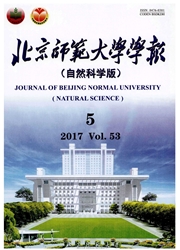

 中文摘要:
中文摘要:
小头虫作为一种广分布的有机污染指示种而为人们所关注.本研究于2006--2007年对厦门鼓浪屿潮间带的小头虫种群进行了周年种群动态和次级生产力的观测,结果如下:其年平均丰度为3463m^-2,月最高丰度值出现在2006年11月,为8785m^-2;年平均生物量为0.66g·m^-2,月最高生物量出现在2007年3月,为2.14g·m^-2.小头虫丰度和生物量与沉积物有机质质量分数均存在显著的正相关关系(P〈0.05).小头虫主要分布在沉积物的表层,本研究中,0~4cm层的相对丰度达84.1%,相对生物量为80.8%,但在个别月份小头虫有向纵深分布的倾向,这可能与氧化层的纵深发展有关.小头虫种群的次级生产力为11.52g·m^-2·a^-2,与其他海域相比适中.年次级生产力(P)与生物量(B)之比(P/B)为17.5,远高于稳定海洋底栖生态系统的P/B值.
 英文摘要:
英文摘要:
Polychaete Capitella capitata is an excellent indicator of polluted environment and attracted the attention of marine scientists. A monthly investigation on population dynamics and secondary production of C. capitata was carried out from March 2006 to March 2007 in the intertidal zone of Gulangyu Island, Xiamen City, China. Annual average abundance was 3 463 m^-2 , with the highest abundance of 8 785 m^-2 in November, 2006. Annual average biomass was 0.66 g·m^-2 with the highest value of 2.14 g·m^-2 exhibited in March, 2007. The abundance and biomass of C. capitata were closely related to organic matter content in the strata (P〈0.05). As a benthic deposit feeder, C. capitata was mainly distributed in layer 0-4 cm, with relative abundance and biomass of 84.1% and 80.8%, respectively. But during a few months it was also present in deeper strata probably due to deeper oxygenation. Secondary production of Gulangyu C. capitata was 11.52 g·m^-2·a^-l , which was a moderate value compared with that at other sea sites. The P/B ratio was 17.5. It was a value far higher than those in stable marine macrofauna communities.
 同期刊论文项目
同期刊论文项目
 同项目期刊论文
同项目期刊论文
 Trace analysis of quinolone and fluoroquinolone antibiotics from wastewaters by liquid chromatograph
Trace analysis of quinolone and fluoroquinolone antibiotics from wastewaters by liquid chromatograph Effects of p,p '-DDE exposure on gonadal development and gene expression in Japanese medaka (Oryzias
Effects of p,p '-DDE exposure on gonadal development and gene expression in Japanese medaka (Oryzias Reproductive Inhibition and Transgenerational Toxicity of Triphenyltin on Medaka (Oryzias latipes) a
Reproductive Inhibition and Transgenerational Toxicity of Triphenyltin on Medaka (Oryzias latipes) a Trace analysis of androgens and progestogens in environmental waters by ultra-performance liquid chr
Trace analysis of androgens and progestogens in environmental waters by ultra-performance liquid chr Occurrence of Androgens and Progestogens in Sewage Treatment Plants and Receiving River Waters: Comp
Occurrence of Androgens and Progestogens in Sewage Treatment Plants and Receiving River Waters: Comp Effects of chronic exposure to nonylphenol on locomotor activity and social behavior in zebrafish (D
Effects of chronic exposure to nonylphenol on locomotor activity and social behavior in zebrafish (D Determination and Occurrence of Retinoic Acids and Their 4-Oxo Metabolites in Liaodong Bay , China ,
Determination and Occurrence of Retinoic Acids and Their 4-Oxo Metabolites in Liaodong Bay , China , Occurrence and Source Apportionment of Sulfonamides and their Metabolites in Liaodong Bay and the Ad
Occurrence and Source Apportionment of Sulfonamides and their Metabolites in Liaodong Bay and the Ad Trophic dilution of polycyclic Aromatic Hydrocarbons (PAHs) in a marine food web from Bohai Bay, Nor
Trophic dilution of polycyclic Aromatic Hydrocarbons (PAHs) in a marine food web from Bohai Bay, Nor 期刊信息
期刊信息
